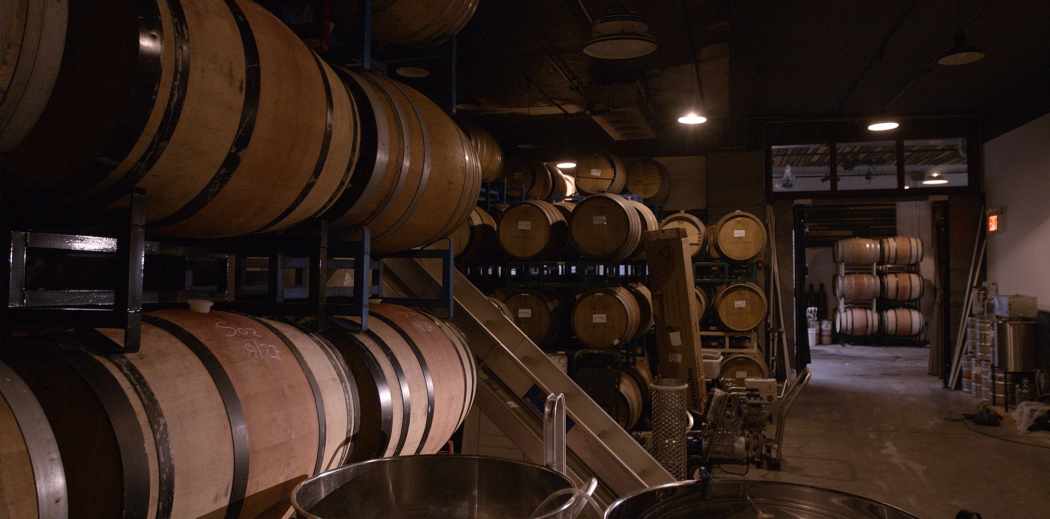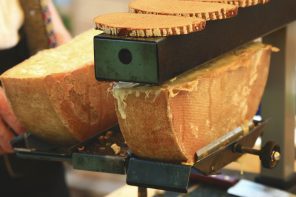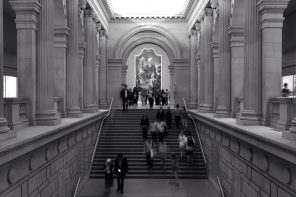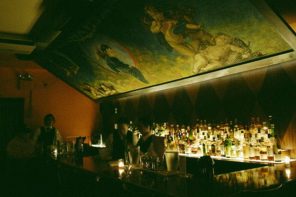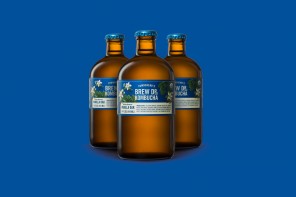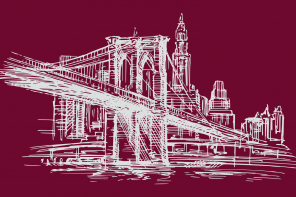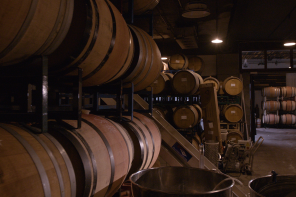Close your eyes. Picture yourself at a winery, glass in hand, looking out the window. What do you see? Rolling hills painted with rows of quick-brushed vines? Vintage trucks porting wooden crates of freshly cut grapes? Winding roads deep in a valley, with a hazy sun glowing overhead?
Maybe. Maybe not. You might see what more and more Americans are seeing when they look out the window of a winery: pavement and concrete.
In the US at least, the image of a hilly Napa hillside as the face of American wine is a relatively recent phenomenon that became popular with the rise in wine tourism during the 1970s. When California wines, and American culture, started to infiltrate national and international audiences, the image of Napa’s idyllic vineyards became a symbol of the American wine industry. This image helped drive wine tourists, and as a result, winemaking facilities and tasting rooms, to the countryside. Before that, especially before Prohibition, wineries in cities were much more prolific. San Francisco’s Bluxome Street Winery estimates that up to 40 urban wineries once stood in its neighborhood whereas, today, only a handful of wineries exist in the entire city.
Bright Lights, Booze City
From 2000 to 2010, the population of America’s cities shot up by 12 percent, with 81 percent of the population—249 million Americans—living in urban areas. The growth of cities is outpacing even the nation’s population growth, which is increasing by about 9.7 percent. To put that in perspective, there are 8.4 million people living in New York City today—that’s a million more people flooding into NYC after the first episode of “Friends.” In a few cities around the country, those numbers have become even more pronounced in recent years. Oakland and the handful of other cities in California’s mainly urban Alameda County saw an influx of more than 25,000 residents in one year leading up to 2015.
With this urban migration, cities have become hotbeds for millennials, who are more likely to live in cities than their parents were at their age. The American Association of Wine Economists counted over 200 urban wineries worldwide as of 2014. The local, personal experience a winery offers (they make the wine right there!) appeals to this age set that cares about making a personal connection with brands. Today’s urban wineries are, in part, the result of a growing urban millennial population that wants to connect locally as much as socially.
In Portland, urban wineries want to tap into the carless market, so locals and visitors can “bike, bus, cab or even walk to visit our tasting rooms and sample the wines we make,” according to the PDX Urban Wineries association website. Attend local events, get to know your neighbors, drink locally—these are all part of the call of the urban winery movement to create communities in the neighborhoods they call home.
That, and millennials are more likely to have multiple kinds of drinks at a single drinking establishment, which means millennials love flights and tastings, or at least they love options. This puts a winery and tasting room experience above that of a typical bar that might not have the same wide selection as a winery would.
Following in Beer’s Footsteps for Once
Breweries and distilleries have long been in the urban booze-making game without the same attachments to terroir as wine has had (when was the last time you tasted a craft beer surrounded by a field of hops?). Anchor Brewing in San Francisco is credited with starting the craft beer trend in the 1970s, which has now become even more symbolic of America’s millennial culture than man-buns and avocado toast.
It’s wine’s close association with terroir that has taken it a little while longer to join the urban market. But today, the personal connection with a local artisan who is making wine just a few blocks away has moved terroir down the list of things that matter to urban consumers.
Tourism to the world’s wine regions is on the rise, but today, city dwellers want more. They want local wines in their neighborhoods, and winemakers are tapping into that new market. Apparently pavement and concrete aren’t so bad when you’re sipping world-class wines.
A Few of Our Favorite Urban Wineries:
Denver: The Infinite Monkey Theorem
Cincinnati: Henke Winery
Brooklyn: Brooklyn Winery
Manhattan: City Winery
Portland: Hip Chicks Do Wine
Berkeley: Donkey and Goat

